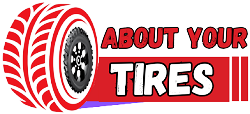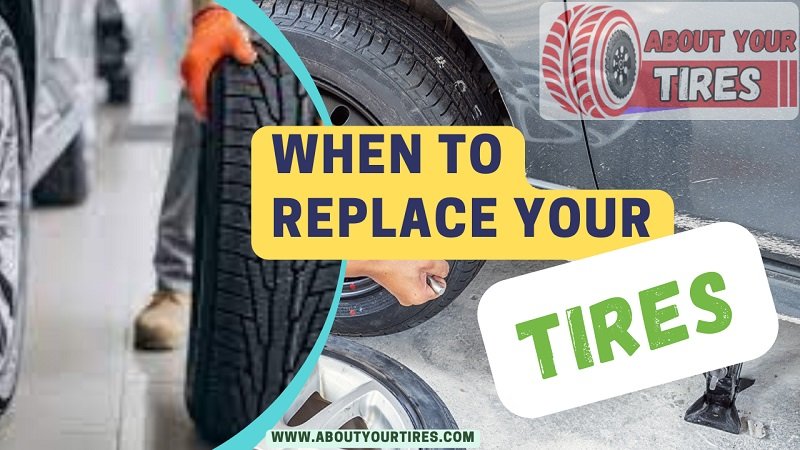Before embarking on the journey of replacing your tires, it’s imperative to consult your vehicle’s owner’s manual for invaluable insights on tire replacement recommendations and limitations. In this manual, you’ll also discover indispensable tire care and maintenance advice. Furthermore, the vehicle manufacturer provides a wealth of information about tire size, load capacity, and recommended tire inflation specifications on the vehicle tire placard, typically situated on the driver’s door edge or door post.
Replacing Your Tires
The wear and tear of tire treads are inevitable as you cruise the roads, making tire replacement a necessary part of vehicle maintenance. However, the speed at which you’ll need to replace your tires hinges on several factors, including your driving habits, the distance you travel, your driving speed, braking and cornering intensity, your geographical location, and how well you maintain your tires.

Signs When to Change Tires
- Tread Wear Bars: Every passenger and light truck tire comes equipped with at least six tread wear bars, also known as treadwear indicators, which are strategically placed in the major tread grooves, evenly spaced around the tire’s circumference. These tread wear bars are raised, smooth, narrow rubber strips measuring 2/32” (1.6mm) in height. They serve as visual cues to let you know when your tire’s tread depth has reached 2/32” (1.6mm). When the tread wear bar aligns with the tread surface, it’s time to replace the tire.
- Uneven Wear Patterns: Learn how to assess your tire’s tread depth and inspect for irregular or abnormal wear patterns that could signify alignment issues or mechanical problems requiring attention.
- Bulges or Blisters on the Sidewall: The presence of these anomalies on a tire’s sidewall can lead to tire malfunction and should be promptly examined by a tire professional.
- Low Tire Pressure: If a tire has been run flat or significantly underinflated, it’s advisable to have it inspected by a tire expert before returning it to service. You may interested in our article on How to Check Tire Pressure
- Sudden Ride Disturbance or Vibration: Any abrupt disturbances in your ride quality may indicate potential tire damage or underlying mechanical problems. In such cases, it’s prudent to consult a mechanic or tire specialist.
Tips for Purchasing Replacement Tires
- Replace All Four Tires Simultaneously: Vehicle manufacturers recommend changing all four tires at once to maintain optimal vehicle performance and handling. If replacing fewer than four tires, specific guidelines must be adhered to. When swapping out just two tires of the same size and construction as the existing ones, it is advisable to place the ones with the deepest tread depth on the rear axle to minimize the risk of oversteering. A single new tire should be paired with the tire having the deepest tread depth out of the other three. Detailed information on installing fewer than four tires can be found in your vehicle’s documentation.
- Prioritize Rear Axle Installation: When installing two new tires, always fit them on the rear axle, subsequently moving the partially worn tires to the front axle. This placement enhances control on wet roads. Further insights on rear axle tire installation are available for your reference.
- Guidelines for 4WD and AWD Vehicles: Always adhere to the recommendations in your vehicle’s owner’s manual. Slight variations in outside diameter may result in drive-train damage or mechanical malfunctions. If your owner’s manual doesn’t provide specific guidance on tire mixing, adhere to these principles:
- Avoid mixing tire sizes.
- Do not combine radial and bias-ply constructions.
- Refrain from pairing tread patterns like all-season and all-terrain.
- Different Speed Ratings: It is generally discouraged to install tires with differing speed ratings. However, if it becomes necessary, ensure that the tires with varying speed ratings are paired on the same axle. The vehicle’s speed capability will be dictated by the lowest speed-rated tire. You can find detailed speed rating information in your owner’s manual or the vehicle tire placard.
- Load-Carrying Capacity: When selecting replacement tires, verify that they possess an equal or greater load-carrying capacity compared to the original equipment tires.
Never Compromise on Load-Carrying Capacity
Certain vehicles, such as large passenger vans, necessitate Load Range E tires. It is prohibited to install tires with a lower load-carrying capacity, like Load Range D, in such cases. Additionally, tires of the same size may bear different load indexes in their service descriptions. It’s vital to ensure that the replacement tires meet or exceed the load-carrying capacity specified by the original equipment manufacturer.
Please take note that Goodyear’s European-Metric and P-Metric passenger tires can be used interchangeably, provided they share the same section width, aspect ratio, and rim diameter.
Caution: Never substitute a “Standard Load” (SL) tire for an “Extra Load” (XL) tire. If your vehicle was originally equipped with “Extra Load” (XL) tires, be sure to replace them with similarly sized XL tires.
A Final Warning
Before you make any decisions regarding tire replacement, always consult your vehicle’s owner’s manual and adhere to the manufacturer’s recommendations on replacement tires. Changing tire size or type can significantly impact your vehicle’s handling.
Should you opt for tires different from the original equipment size, it is prudent to consult a professional installer to ensure proper clearance, load-carrying capacity, and inflation pressure. Avoid surpassing the maximum load capacity and inflation pressure indicated on the tire’s sidewall. Drive cautiously, obey traffic rules, and refrain from abrupt maneuvers. Failure to heed this warning may result in loss of vehicle control, leading to accidents, serious injuries, or even fatalities. When replacing tires, maintain the original equipment tire’s outside diameter and load-carrying capacity. You may need to adjust inflation pressure to prevent tire overloading. Refer to the Tire & Rim Association Load and Inflation Tables, ETRTO, or JATMA standards for accurate load and inflation information.
You may refer to Wikipedia for more information

